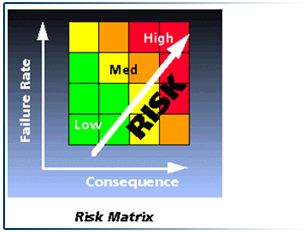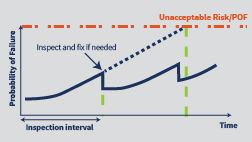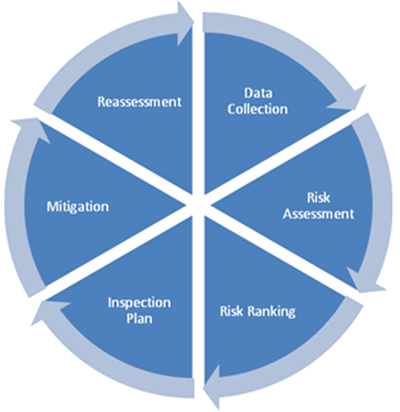 | ||
Rblx rbi risk based inspection software
Risk Based Inspection (RBI) is an Optimal maintenance business process used to examine equipment such as pressure vessels, heat exchangers and piping in industrial plants. It examines the Health, Safety and Environment (HSE) and business risk of ‘active’ and ‘potential’ Damage Mechanisms (DMs) to assess and rank failure probability and consequence. This ranking is used to optimize inspection intervals based on site-acceptable risk levels and operating limits, while mitigating risks as appropriate. RBI analysis can be qualitative, quantitative or semi-quantitative in nature.
Contents

Accuracy is a function of analysis methodology, data quality and consistency of execution. Precision is a function of the selected metrics and computational methods. Risk presented as a single numeric value (as in a quantitative analysis) does not guarantee greater accuracy compared to a risk matrix (as in a qualitative analysis), because of uncertainty that is inherent with probabilities and consequences.
RBI is most often used in engineering industries and is predominant in the oil and gas industry. Assessed risk levels are used to develop a prioritised inspection plan. It is related to (or sometimes a part of) Risk Based Asset Management (RBAM), Risk Based Integrity Management (RBIM) and Risk Based Management (RBM). Generally, RBI is part of Risk and Reliability Management (RRM).

Inspections typically employ non-destructive testing (NDT).
Prioritization

Items with high probability and high consequence (i.e. high risk) are given a higher priority for inspection than items that are high probability but for which failure has low consequences. This strategy allows for a rational investment of inspection resources.
Objectives

RBI assists a company to select cost effective and appropriate maintenance and inspection tasks and techniques, to minimize efforts and cost, to shift from a reactive to a proactive maintenance regime, to produce an auditable system, to give an agreed “operating window”, and to implement a risk management tool.
The purposes of RBI include:

- To improve risk management results
- To provide a holistic, interdependent approach for managing risks
- To apply a strategy of doing what is needed for safeguarding integrity and improving reliability and availability of the asset by planning and executing those inspections that are needed
- To reduce inspections and shutdowns and provide longer run length without compromising safety or reliability
- To safeguard integrity
- To reduce the risk of failures
- To increase plant availability and reduce unplanned outages
- To provide a flexible technique able to continuously improve and adopt to changing risks
- To ensure inspection techniques and methods consider potential failure modes
Standards
International engineering standards and recommended practices outline requirements, methodologies and the implementation of RBI.
